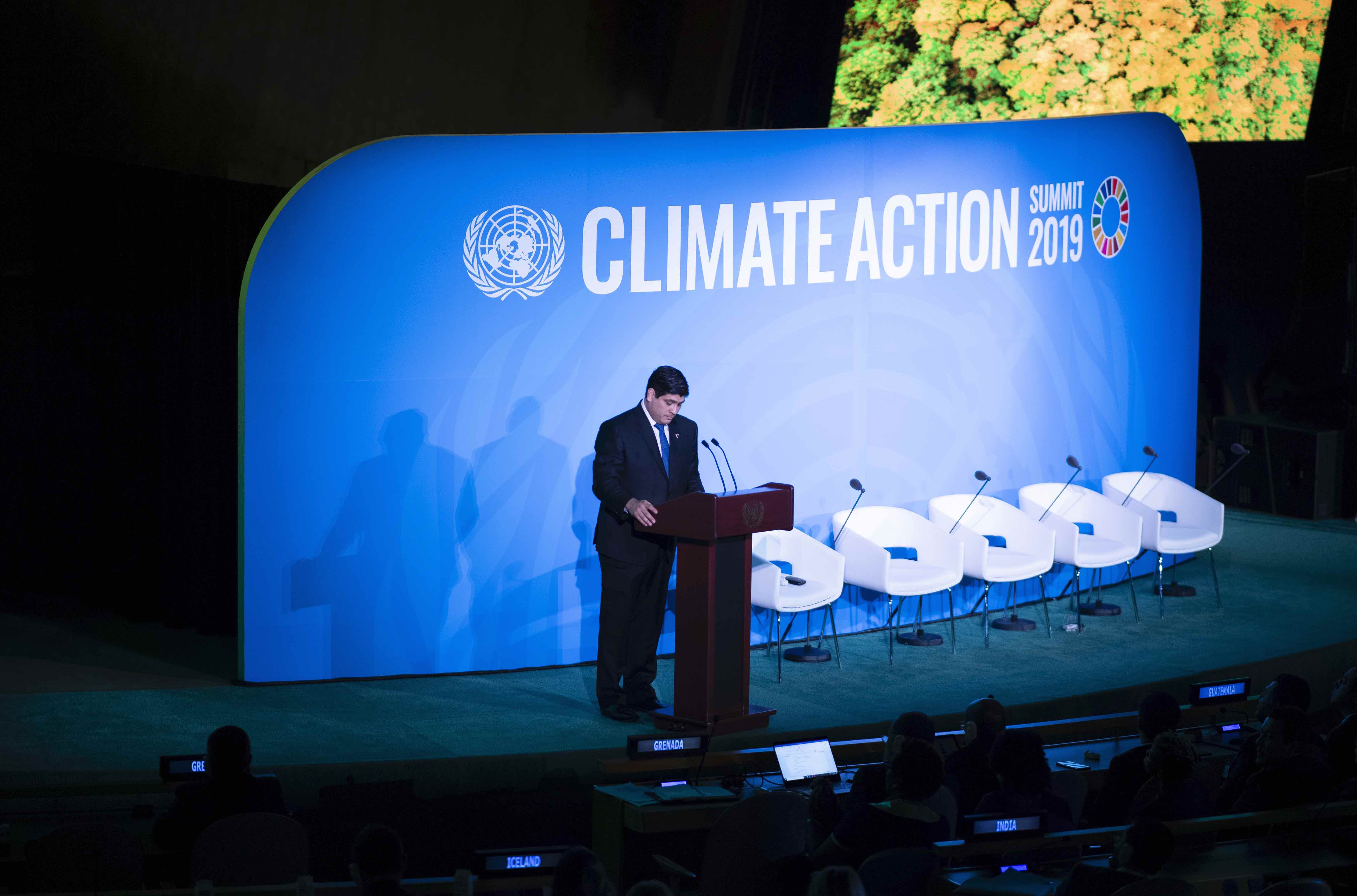The UN Secretary General, Antonio Guterres, hosted a climate summit Monday for world leaders to revise their plans to reduce greenhouse gas emissions.
These are the current commitments of the main issuing countries, formally submitted to the UN after the signing of the Paris Agreement on Climate Change in 2015. Countries are expected to begin enacting their plans by 2020.
Each country remains free to set its own objectives and base year, which makes direct comparisons difficult. Even if all these stated objectives were achieved, it would not be enough to contain global warming “well below 2° C compared to pre-industrial levels,” as stipulated in the 2015 agreement.
Meeting these commitments would lead to warming around 3° C, according to the United Nations.
China’s Paris Agreement commitments
China, the largest emitter of greenhouse gases since the mid-2000s (double that of the United States), has pledged to reduce its emissions by 2030. It should achieve this, climate experts say, who point out that renewable energy capabilities continue to improve.
China has also set itself a goal that 20% of its energy consumption come from non-fossil energy, a more difficult objective.
The United States’ Paris Agreement commitments
The US commitments date back to the presidency of Barack Obama: reduction of greenhouse gas emissions from 26-28% below 2005 levels by 2025.
But in 2017, President Donald Trump announced his intention to leave the Paris Agreement (which will enter into force in 2020) and immediately began to cut the pillars of his predecessor’s climate plan — particularly in regards to coal-fired power plants and vehicular emission standards.
The European Union’s Paris Agreement commitments
The EU has committed to a 40% reduction by 2030, compared to 1990. The objective will be exceeded, according to the European Commission, whose new president, Ursula von der Leyen, wants to reach 50% or even 55%.
The EU also hopes that in 2020, its member states adopt an objective of carbon neutrality by 2050. There are only four countries left to convince: Poland, Hungary, the Czech Republic and Estonia.
India’s Paris Agreement commitments
India, which became the fourth-largest emitter in the world at the beginning of the decade, ahead of Russia, has pledged to reduce the intensity of its economy’s emissions between 33% and 35% below 2005 levels by 2030. This means that every dollar of the Gross Domestic Product will generate a third less greenhouse gases.
The country, which invests heavily in solar energy but continues to rely heavily on coal, is on track to achieve it, in addition to another commitment: increase energy from non-fossil sources by 40% by 2030. According to the Climate Action Tracker, it could achieve this in the 2020s.
Costa Rica’s Paris Agreement commitments
According to the Climate Action Tracker, Costa Rica’s decarbonization plan “would result in a pathway very close to our 1.5°C range.”
“The National Decarbonization Plan is more ambitious than Costa Rica’s Paris Agreement targets for 2030 and 2050,” the organization says. “The government plans to present an updated Nationally Determined Contribution (NDC) in 2020, which is expected to be informed by the new plan, as well as other climate policy planning documents, including the National Strategic 2050 plan.”
Countries that have adopted a carbon neutrality objective
Two small countries, Bhutan and Suriname, already have a zero carbon footprint and, in fact, boast negative carbon output.
Four other countries have enshrined the objective of carbon neutrality in their national legislation: Norway (2030), Sweden (2045), the United Kingdom and France by 2050 (the final vote in the French Senate scheduled for late September).
Fourteen nations, as well as the European Union, are in various legislative stages: Chile, New Zealand, seven European countries, Fiji, the Marshall Islands, Uruguay, Costa Rica and Iceland, according to the Energy and Climate Intelligence Unit.
The adoption of this objective does not mean that these countries are on track to achieve it, as evidenced by the French example, where the Higher Climate Council ruled in June that the measures taken are still “insufficient.”








